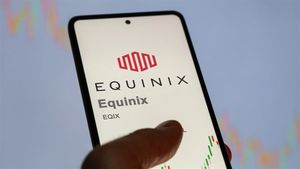Working Principle of the Electric Vehicle Charging Controller (EVCC)
1, Introduction
With the increasing popularity of electric vehicles (EVs), the electric vehicle charging controller (EVCC) plays a crucial role as the bridge between EVs and charging stations. The EVCC not only manages the EV's charging process but also provides multiple protection measures to ensure safe and efficient charging. This article will detail the working principle and control strategy of the EVCC.
2, Working Principle of the EVCC

The EVCC is a core component of the EV Charging System and is primarily responsible for the following tasks:
Power Conversion and Control:
The EVCC consists of a power conversion module and a control module. The power conversion module converts external AC power into DC power to charge the EV battery. This module typically includes a transformer that adjusts the voltage and current of the input AC power to ensure stable and efficient supply to the EV. The control module monitors the charging process, including recording power information, adjusting charging power, and controlling charging safety.
Communication Interface: The EVCC communicates with the electric vehicle, charging station, and power grid through a communication module, enabling information exchange and control. This communication function not only helps understand the electric vehicle's real-time charging needs but also ensures precise control of various parameters during the charging process.
Safety Protection: The EVCC incorporates multiple built-in protection mechanisms, such as overcurrent protection, overvoltage protection, and temperature protection, to ensure charging safety. Upon detecting an abnormality, the EVCC immediately takes appropriate action to prevent damage to the electric vehicle or charging infrastructure.
Charging Metering and Billing: The EVCC records the amount of energy used during charging and provides relevant billing information. This provides convenient charging management and statistical services for users and operators.
3,Detailed EVCC Control Strategy
The EVCC control strategy aims to achieve an efficient, safe, and intelligent charging process. Its main control strategies include:
Handshake Phase: When the electric vehicle is connected to the charging station, the EVCC and the charging station perform a handshake to establish a communication link. This phase confirms the identity and status of both parties and prepares for the subsequent charging process.
Charging Parameter Negotiation: The EVCC negotiates charging parameters, such as charging power and charging mode, with the EV and the charging station. This step ensures that the charging process is tailored to the EV's needs and the charging station's characteristics.
Charging Phase: During the charging process, the EVCC dynamically adjusts the charging station's output current and voltage based on the EV's needs and the charging station's characteristics. This phase typically utilizes a constant current followed by a constant voltage charging method to improve charging efficiency and safety. Initially, a low current is used for pre-charging to warm the battery cells and stabilize their characteristics. This phase then transitions to a high-current constant current charging phase for rapid charging. When the battery voltage approaches a set threshold, the system transitions to a constant voltage charging phase, continuing charging at a lower current to prevent overcharging.
Charging End: After reaching the preset charging target, the EVCC sends a signal to the charging station to stop charging. At this point, the EVCC also records the charge level and related information for subsequent billing and management purposes.
Software Update and Remote Control: The EVCC supports software updates, which can be remotely updated to add new features and improve performance. Furthermore, the EVCC features intelligent and automated functions, automatically identifying electric vehicle models, selecting the optimal charging strategy, and enabling remote monitoring and control via cloud services.
4,International Applications
The EVCC also boasts international application capabilities. It can convert GB/T27930 CAN communication standards into PLC communication standards such as ISO/IEC15118, DIN70121, and SAE2847-2, enabling charging of GB-compliant new energy vehicles in overseas markets such as Europe and the United States. Furthermore, the EVCC can convert GB/T27930 communication standards into the Japanese CHAdeMO communication standard, enabling GB-compliant electric vehicles exported to Japan to be charged using Japanese-compliant charging stations in Japan.
5, Conclusion
As the core controller of the electric vehicle charging system, the EVCC plays a vital role in power conversion and control, communication interfaces, safety protection, and charge metering and billing. Through sophisticated control strategies and advanced communication technologies, the EVCC enables efficient, safe, and intelligent charging, providing strong support for the popularization and promotion of electric vehicles. With the rapid development of the electric vehicle market and the continuous advancement of technology, EVCC will continue to evolve and innovate, bringing a more convenient and safe charging experience to electric vehicle users.
Media Contact
Company Name: Shanghai Mida EV Power Co.,Ltd.
Email: Send Email
Country: China
Website: https://www.midaev.com/





